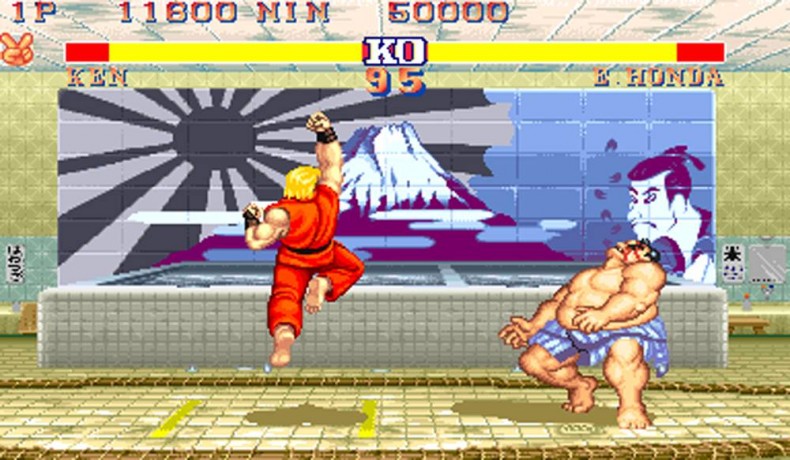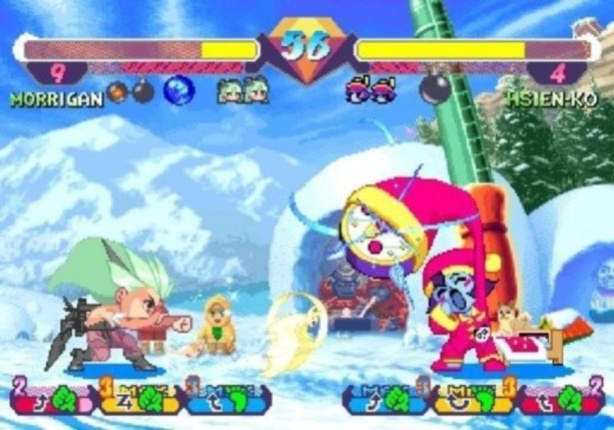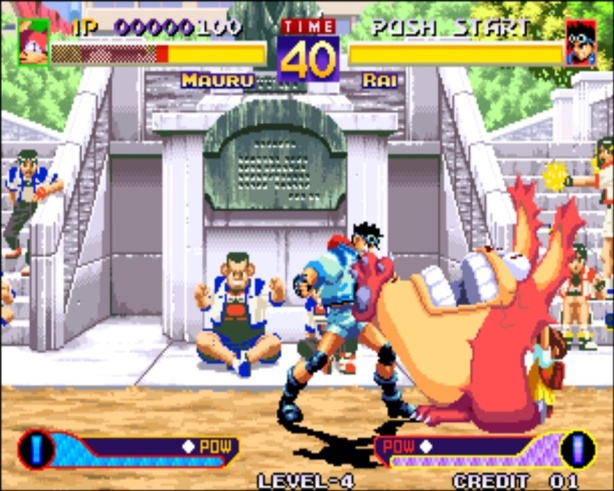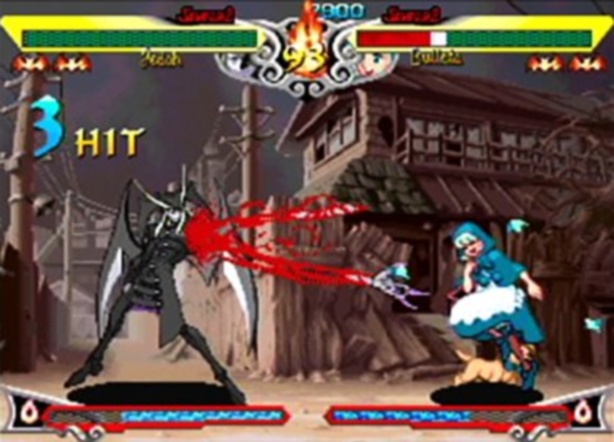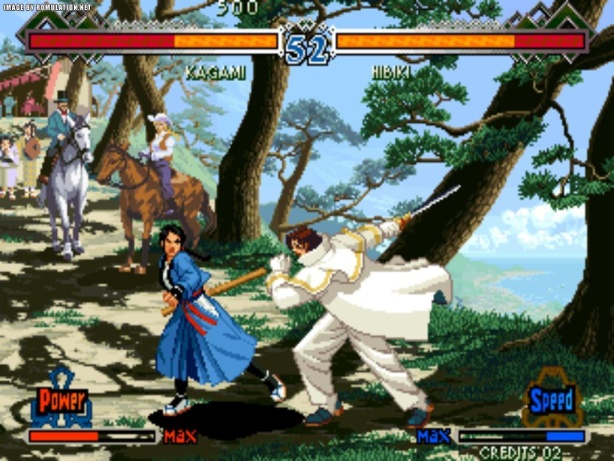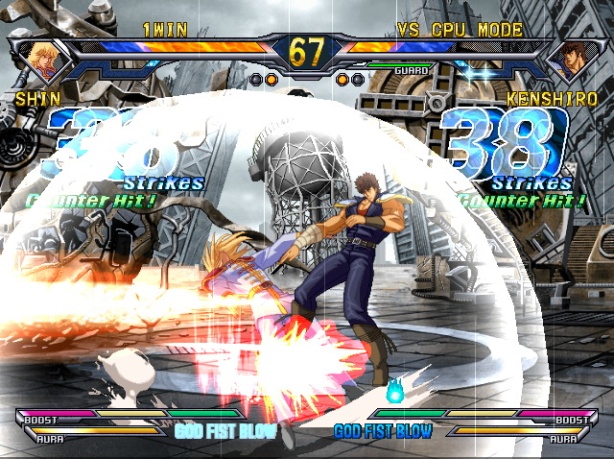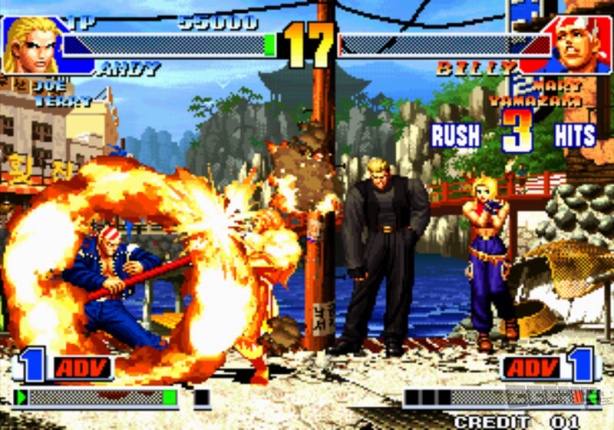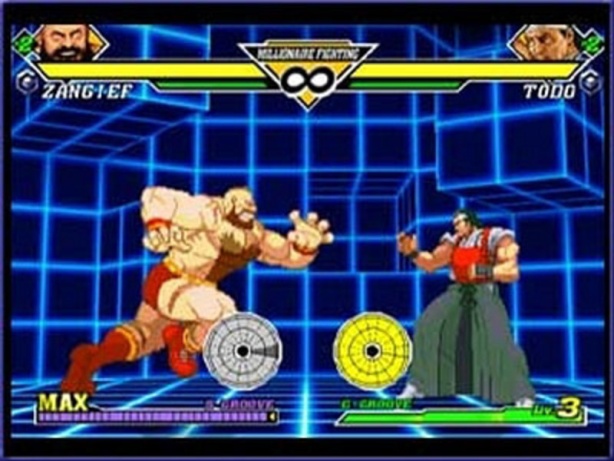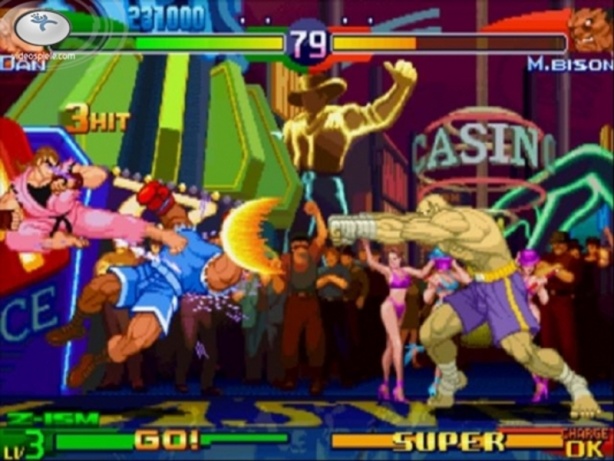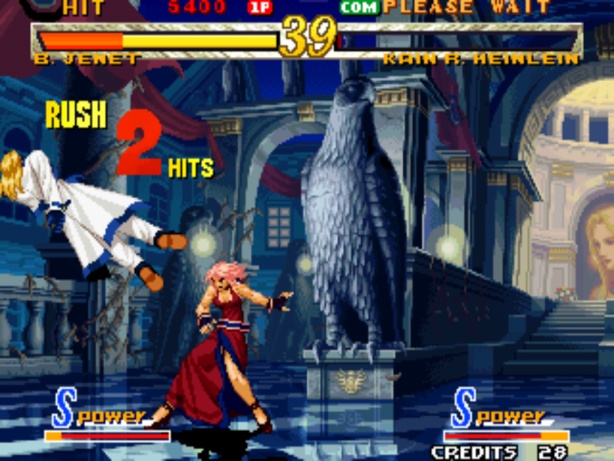Kids these days are barely out of nappies before they are equipped with a headset and wireless joypad, thrown a copy of Call Of Duty 6 and told to go and capture the flag from a team of American nerds. Either that, or they are transported straight into their games via motion sensor technology in a manner you would never have thought possible ten years ago.
As a child who grew up in the late 80s and early 90s, the thought of something as interactive as Kinectimals would have made my tiny little mind explode, so impressed was I by the likes of Dragon’s Lair, Star Wars and Ghosts & Goblins. But although the technology that the ankle-biters of today take for granted wasn’t available to me, what I did have as a kid was proper, decent arcades. There were machines all over the place: in the local newsagent, in the working men’s club where I used to go with my old man, down the chip shop, and (believe it or not) in actual dedicated arcades. It was in one of these fag-burned dens of iniquity not far from where I lived as a nipper that I had my initial liaison with what was to become my first (and still my favourite) gaming love: the one-on-one 2D fighter.
I had already played Street Fighter. That was ancient history to me; they had that game, along with a dedicated Super Mario Bros cabinet, in the local swimming baths. And it didn’t take my young gaming brain long to make my mind up that Capcom’s first attempt at a Vs. fighter left much to be desired. I was glad when they replaced it with Gauntlet, a game that served me well until the instructor with the dodgy wig pretty much put me off swimming for the rest of my life. But the story of the scars inflicted by that gentleman is best left for another time.
Anyway, imagine my shock when I first encountered Street Fighter 2. Everything was bigger and better. There were special moves that you had to learn, six buttons, proper speech and unforgettable music that burned its way into my cranium. There were even various urban legends about the game, such as the existance of the mythical character Sheng Long. I was down the local Laser Quest whenever I could go, playing “winner stays on” against all of the other people who visited the place just to master the Hadouken, the Hundred Hand Slap and Zangief’s tricky yet devastating Spinning Piledriver. Sure, I got my ass handed to me plenty of times by the leather-jacket-and-sunglasses-wearing Chinese teenagers that used to hang around looking like arcade versions of the Ramones, but I was hooked.
Street Fighter 2 seemed to spur other games developers into action, meaning that the (now sadly departed) Laser Quest arcade became home to many more quality fighters, all of which I ploughed my meagre pocket money into with vigour, eager to master Fatal Fury 2, Mortal Kombat and even Primal Rage. I was hooked on quarter-circle motions, dragon punch zigzags, and charge-and-release mechanics: for life. And although I drift in and out of love with games over the years, I always find myself drawn back to 2D fighting action.
A cursory glance at what is left of my retro games collection reveals that I cannot bear to be parted from my fighters and a couple of sticks to play them on. And among the titles I have still clung onto for dear life, even after seeing the horrified look on my girlfriend’s face when I unpacked them into her flat, are these ten beauties that I consider to be my favourite examples of the genre.
10: Pocket Fighter (Capcom, 1997)
Pocket Fighter is an absolute scream of a game. You control cutesy, super-deformed versions of your favourite Street Fighter and Darkstalkers characters (as well as one from little-played CPS 3 oddity Red Earth) and engage in deceptively deep gameplay which involves using attacks to dislodge various coloured gems being held by your opponent. When in your possession, these gems will “power up” different moves in your arsenal. With an absolutely mental plot that creates silly alternative universes for well respected characters, numerous fan-baiting references to other Capcom games and a genuine sense of fun and frolic, Pocket Fighter is far from the kiddies’ game it initially resembles.
9: Waku Waku 7 (Sunsoft, 1996)
There are plenty of amazing fighters available for SNK’s glorious 2D console, but none quite as imaginative and bat-shit bonkers as Sunsoft’s 1996 slab of brawling lunacy. Waku Waku 7 takes a cast of weird and wonderful combatants, many of whom lampoon the protagonists of other well known fighting games (for example, an anthropomorphic punching bag styled upon Street Fighter’s Ryu), or resemble figures from popular anime (Mauru is the spit of Miyazaki fave Totoro). It places the 9-strong roster in one-on-one fights which utilise a collection of simple-to-execute but pleasingly over-the-top special attacks. The game features huge sprites that are beautifully animated, even when the Neo Geo performs some of its “zooming and scaling” graphical trickery.
8: Vampire Chronicle For Matching Service (Capcom, 2000)
Darkstalkers, or Vampire as it is known in Japan, was Capcom’s attempt at something a little bit different. With a set of beautifully-realised fighters based upon fictional monsters, in 1994 it introduced some fighting mechanics that would go on to become standard in the genre, such as air blocking, chain combos and crouch walking. It went on to receive two proper sequels, neither of which are anything other than excellent. However, the nerd in me always preferred the mail-order only Japanese Dreamcast pseudo-sequel, which cropped up in 2000.
Vampire Chronicle for Matching Service features a Zero 3-esque option to select fighting styles from previous series instalments, as well as a bumper collection of monstrous characters including generously-breasted succubus Morrigan and the bizarrely attractive cat/human hybrid Felicia. A decade later, it remains the best Vampire experience you can lay your hands on.
7: The Last Blade 2 (SNK, 1998)
1998 was an excellent year for fighting games, and yet one of the finest ever released has probably passed many gamers by. Samurai Shodown (also known as Samurai Spirits) has long been the most popular and well known SNK weapons-based fighter. But my favourite, for a variety of reasons, has always been the sublime Last Blade 2.
With gameplay based around patience, counter moves, parries and chained together combos, Last Blade 2 gives you the option to select either a “power” or “speed” version of your character, both offering very different ways of playing the game.
The game is graphically sublime, with huge, awesome-looking characters (some of which are based on genuine historical figures) battling against stunning hand-drawn backdrops. The sound effects are also terrific, featuring wonderfully-orchestrated music and sword-clinking sound effects. These things, combined with the atmospheric introduction scenes for each bout, really set The Last Blade 2 apart from the bombast of the Shodown series. Not one for button mashers.
6: Hokuto No Ken (Arc System Works, 2005)
Capcom and SNK are not the only firms who know their way around a good fighting game. Arc System Works are also pretty handy with the 2D plane, as their much-loved (yet admittedly hit-and-miss) Guilty Gear series shows. Perhaps their best all-round effort is their terrific 2005 release Hokuto No Ken, lovingly based upon the long-running Japanese Manga series.
With some truly beautiful graphics, deep gameplay mechanics (it has some mind blowing super attacks, instant kills and a cool combo system that is far easier to learn than those in Guilty Gear) and bombastic sonics that include most of the original voice actors from the 1980s Japanese television show, Arc have created a wonderful homage to Fist Of The North Star.
5: The King of Fighters ’98: The Slugfest (SNK, 1998)
Fatal Fury aside, The King of Fighters is SNK’s true counterpart to Street Fighter. In Japan, it is wildly popular, much more so than on this side of the world, and there have been umpteen cracking instalments in the legendary fighting tournament, all featuring a clutch of unforgettable characters just as iconic and fun to play with as any other.
The King of Fighters ’98 was, for its time, the best game in the series and represented the first time (since Fatal Fury Special) that anyone truly considered an SNK fighter to be able to stand alongside what Capcom were producing elsewhere. And it still stands up well today, even though you could argue that SNK have since pushed the series on to greater technical heights.
Without a nutjob plot to worry about and with several returning characters from previous games, including German arms dealing psychopath Rugal, King of Fighters 98 is a tag team battle par excellence, and well worth picking up and playing, especially given its easy availability.
4: Capcom vs SNK 2: Mark Of The Millennium 2001 (Capcom, 2001)
Fighting geeks the world over had long argued over which company produced the best fighters: Capcom or SNK. This is why, as a collective nerdy entity, we could barely contain our excitement when Capcom vs SNK was released to arcades in 2000. Marrying the characters from across the two universes in holy shit-kicking matrimony, we were finally able to answer the question that had plagued the universe for aeons: just who would win in a fight between Terry and Ryu? The answer was: “Us: the gamers”.
The game was tremendous, and was cranked up a notch in the superior 2001 sequel. Capcom vs SNK 2 provides you with a smorgasbord of characters and a selection of different fighting styles borrowed from other games. Further to this, is also tweaks the SNK characters to fit in with the six-button Capcom “style”. If you ignore Capcom’s somewhat lazy decision to re-use sprites from earlier games rather than redraw them (the Morrigan sprite is the stuff of much internet ridicule), this is a highly entertaining dust-up that looks and plays great even ten years on.
3: Marvel vs Capcom 2: New Age Of Heroes (Capcom, 2000)
Capcom whet our appetite for crossover action when they gave us X-Men: Children Of The Atom, an outrageously over-the-top Street Fighter-on-steroids fighter that featured our favourite mutant anti-heroes in combat. They then created the legendary “Vs.” series that brought our favourite Marvel comic dudes in direct opposition to the denizens of their own gaming universes. To date there have been five such cross-pollinations, including the beautiful Marvel vs. Capcom 3 which exploded onto our home consoles earlier this year. But this lowly reviewer has always preferred its predecessor, which was unleashed upon stunned arcade-goers back in 2000.
Marvel vs. Capcom 2 features an astonishing 56 characters drawn from the previous games in the series, and provides a tag team-style “assist” technique, which provides endless possibilities for combos. It also features some screen-filling special attacks and can be picked up and enjoyed even by novice players despite allowing zen-like mastery by the hardcore.
The icing on the cake is a splendidly stupid ditty that plays on the character selection screen. Although this is completely out of place, it somehow feels so…right.
2: Street Fighter Zero 3 (Capcom, 1998)
There have been many, many 2D versions of Street Fighter over the years, all with their strengths, weaknesses, fans and detractors. While it is hard to deny with the impact of Street Fighter 2 or to ignore the superb parrying system and beautifully animated sprites in Street Fighter III: 3rd Strike, I have plumped for 1998’s stunning Zero 3. With a selection of three different fighting styles, a mind-melting array of characters, and a banging soundtrack that remixes and revamps some of your favourite Street Fighter themes, Zero 3 is a cast-in-stone classic that still garners plenty of tournament play amongst hardcore bods.
1: Garou: Mark of the Wolves (SNK, 1999)
Garou is undoubtedly the pinnacle of SNK’s Fatal Fury universe, and easily one of the finest fighters for that machine or indeed any other. It also features animation and design to rival any other 2D fighter from its era, even Capcom’s 3rd Strike, a game which is often heralded as the king of the graphical castle in fighterville.
It might be visually and sonically amazing, but as Rise Of the Robots taught us in brutal fashion, aesthetics aren’t worth anything if the gameplay is a mess. Thankfully, Garou plays like a dream. It features a far more logical parrying system that its renowned Capcom counterpart, and introduces the well thought out “Tactical Offence Position” system. This feature allows you to select an area of your energy bar which, once your power is depleted to that section, allows you to enter T.O.P. mode, giving you access to special and more powerful attacks, as well as gradual life recovery.
The well-balanced, beautifully designed characters (including my favourite version of the gorgeous Terry Bogard to date) have a super array of moves that are easy to master. However Garou: Mark of the Wolves is a deeply strategic affair, and anyone coming to the table to button mash will get easily hammered by an experienced player.
SNK Playmore illustrator and big cheese Falcoon has been banging on for years about a sequel. Whilst I’d love to see this sequel made, part of me hopes they don’t mess with what comes pretty damn close to perfection by doing so.
This article was originally posted on July 8th, 2011.


